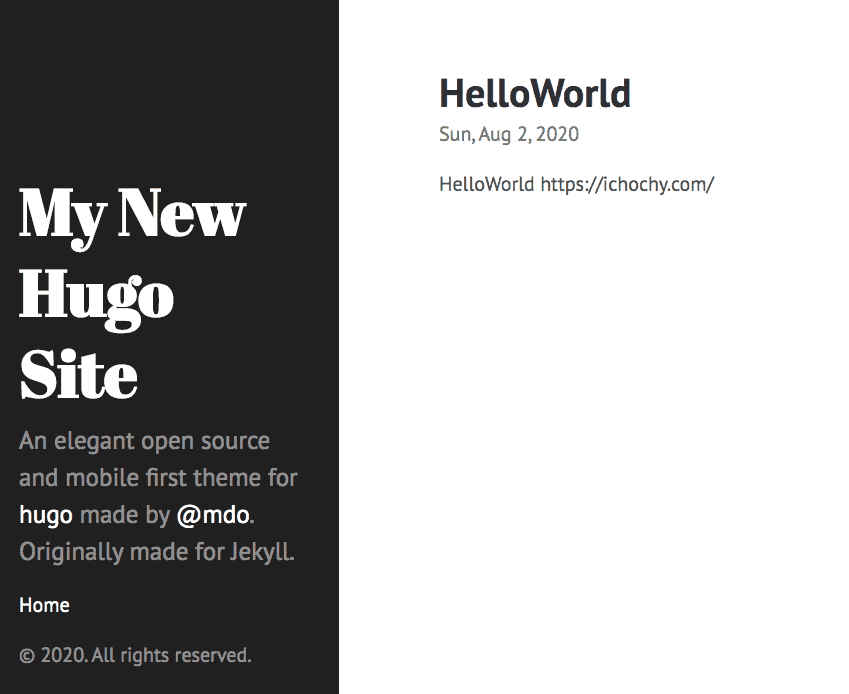

- #Hugo github pages how to
- #Hugo github pages install
- #Hugo github pages generator
- #Hugo github pages update

Subfolder contains all user-editable source files from which the website is built.


The most important files to configure your website are the following: A full description of what to do can be found in the Now it is time to set up the initial website. Initial state of the website before any modifications. Sources, which comes in handy while developing your contents. In this mode Hugo will automatically re-generate your site whenever you change your Which will build the website and make it available at Alternatively, you can also start a local webserver with hugo server Locally by executing hugo, which will generate the website and place all files in the public/ĭirectory. This step is required once after you clone your source repository to a new location, as it willĭownload necessary files for the Hugo Academic theme to work.
#Hugo github pages update
Running git submodule update -init -recursive To do this, you first need to initialize the git submodules by Make sure to replace the URL of the source repository with your own!īefore proceeding to make modifications, you should have a look at the initial state of the websiteĪnd verify that everything works. Replace the URL of origin with your source repository’s URL, and push it to GitHub: git clone academic-kickstart-demo In this post, I will call the source repositoryĪcademic-kickstart-demo and it is availableĬlone the Academic Kickstart repository from , You can safely make it private,īut do not initialize it with at README. Prevents you from making your source repository private, which is why I decided to take aĭifferent route and manually duplicate the Academic Kickstart repository to my GitHub account:Ĭreate a new repository on GitHub, e.g., academic-kickstart. Unprocessed sources, from which the website’s HTML documents will be built.
#Hugo github pages install
Make sure you install the extended version of Hugo, which is required to build the Hugo AcademicĪs a first step, we will create a new source repository on GitHub. The easiest way to set up Hugo is to download and unpack the latest release from the Furthermore, you also need to install Hugo on your machine, such that youĬan build and test your website locally before deploying it. PrerequisitesĪs stated above, you need to have a GitHub account and at least some familiarity with using git from Website with Hugo and create a new commit on the host repository. We will use GitHub Actions toĪutomatically deploy from the source to the host repository, i.e., if a change to the website isĬommited and pushed to the source repository, our GitHub Actions setup will auto-generate the actual That contains the website’s unprocessed resources and a host repository that hosts the The final goal will be to have two GitHub repositories: a source repository Releases at the time of writing (July 2020). Post is based on Hugo Extended 0.73.0 and Hugo Academic 0.49, which were the respective latest
#Hugo github pages how to
Understanding of how to use git from the command line and who already have a GitHub account. It is targeted towards readers who have a basic
#Hugo github pages generator
Hugo Academic theme for the static site generator This post describes how one can set up a personal website using the Automatically publish changes in source repository on your website


 0 kommentar(er)
0 kommentar(er)
